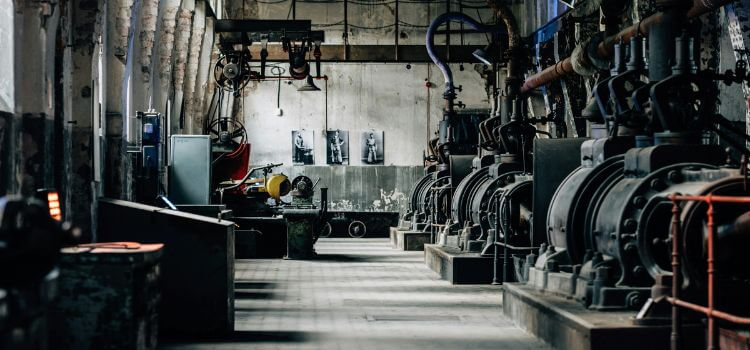As an Amazon Associate, I earn from qualifying purchases

Not all furnaces have humidifiers. Some furnaces have built-in humidifiers, while others require separate installation.
The degree of humidity can significantly affect indoor air quality and comfort. Furnace humidifiers can help regulate humidity levels in the home, which can help reduce dry skin, static electricity, and respiratory issues. However, not all furnaces come with built-in humidifiers.
Some furnaces may require a separate installation of a humidifier unit. It is essential to consult with a professional HVAC technician to determine if a furnace humidifier is necessary for your home and which type would best suit your specific needs. We’ll examine the many kinds of furnace humidifiers. And how they can benefit your home.
The Role Of Humidifiers In Home Heating
Humidity Levels And Comfort
In a home, the proper humidity levels are essential for comfort.
Impact Of Dry Air On Health And Property
Dry air can negatively affect health and damage property.
Comparing Furnaces: With And Without Built-in Humidifiers
Types Of Furnaces
There are two main types of furnaces: those with integrated humidifiers and those without.
Pros And Cons Of Integrated Humidifiers
Furnaces with built-in humidifiers offer convenient moisture control but may require more maintenance.
Understanding Furnace Humidifier Configurations
Stand-alone Vs. Built-in Humidifiers
Furnace humidifiers come in two main configurations: stand-alone and built-in. Stand-alone humidifiers are separate units that can be installed independently from the furnace. They are usually portable and can be moved from room to room. On the other hand, built-in humidifiers are directly integrated into the HVAC system, allowing for more efficient and convenient humidity control.
Popular Brands And Models
Regarding furnace humidifiers, several brands and models stand out in the market. Some popular brands include Honeywell, Aprilaire, and GeneralAire. Every brand provides a selection of models with varying features and capabilities, catering to different household needs and preferences.
The Installation Process For Furnace Humidifiers

When installing a furnace humidifier, remember a few key considerations. Whether or not you have it installed by a pro, take the DIY route. To guarantee the best performance, the installation procedure is essential to the optimal performance of your furnace humidifier.
Professional Installation Considerations
Professional furnace humidifier installation offers several benefits, including expert knowledge and a quality artistry guarantee. Here are a few key considerations when opting for professional installation:
- Expert assessment of your home’s specific humidity needs
- Precision installation to ensure seamless integration with your existing HVAC system
- Professional calibration and testing to verify the functionality of the humidifier
- Warranty coverage for both the humidifier unit and the installation work
Diy Installation Tips
Installing a furnace humidifier can be feasible for those confident in their DIY skills. Here are some tips to keep in mind if you choose to go the DIY route:
- Thoroughly read the manufacturer’s installation instructions
- Ensure compatibility with your existing furnace system
- Take necessary safety precautions and turn off the power before installation
- Double-check all connections and settings before powering up the unit
Maintenance Tips For Furnace Humidifiers
Frequent care and attention are necessary to maintain your furnace humidifier’s longevity. Longevity. If you adhere to basic upkeep guidelines, you may keep your furnace humidifier running smoothly and effectively, creating a comfortable indoor environment for you and your family.
Regular Cleaning Routines
Maintaining a clean and well-functioning furnace humidifier is crucial for ensuring proper moisture levels in your home. Regular cleaning assists in avoiding the build-up of mineral deposits—bacteria, and mold, which might impact the humidifier’s performance and compromise indoor air quality.
- Start by turning off the power to the furnace and the humidifier.
- Remove the humidifier cover and carefully inspect the components for any signs of garbage or filth.
- Gently wipe it down using a gentle brush or cloth on interior surfaces, including the water reservoir, evaporator pad, and distribution tray.
- Check the drain line for any clogs and clear them if necessary.
- Replace the evaporator pad at least once a year to ensure efficient operation.
- Finally, replace the cover and turn the power back on, ensuring the humidifier functions correctly.
Troubleshooting Common Issues
Even with regular maintenance, furnace humidifiers may experience occasional issues that require troubleshooting. Common problems such as low moisture output, leaks, or unusual noises can often be resolved with simple adjustments and repairs.
- If you notice low moisture output, check the water supply and ensure the inlet valve is fully open.
- Inspect the humidistat settings to ensure they are correctly adjusted for the desired humidity level.
- For leaks, check the water supply connections, distribution tray, and drain line for any signs of damage or blockages.
- Suppose you hear unusual noises, such as rattling or humming. In that case, it may indicate a problem with the fan motor or other internal components that require professional attention.
Assessing The Need For A Humidifier In Your Home
Assessing the Need for a Humidifier in Your Home
Climate And Seasonal Factors
The climate and seasonal changes in your area can significantly affect the humidity levels in your home. There is typically more dry air in cooler climates, especially during the winter when furnaces are constantly used. This can lead to lower indoor humidity levels, resulting in pain and health problems for occupants. On the other hand, in humid climates, a furnace humidifier may not be necessary as the air is naturally moist.
Home Size And Layout
The arrangement and size of your house are crucial factors to consider when assessing the need for a humidifier. Larger homes may have more significant variations in humidity levels across different areas. Also, homes with open floor plans may require a different humidification approach than those with separate rooms. Evaluating these aspects can help determine whether a furnace humidifier is necessary for maintaining optimal indoor humidity levels.
Cost Analysis: Adding A Humidifier To Your Furnace

Considering the cost implications of installing a humidifier in your furnace is crucial for making an informed decision.
Initial Installation Costs
The initial installation costs for adding a humidifier to your furnace typically range between $300 to $800.
This includes the price of the humidifier unit itself, any additional parts needed, and the labor cost for installation.
Long-term Savings And Benefits
While there is an upfront cost, adding a humidifier to your furnace can lead to long-term savings and benefits.
Having a humidifier can improve the efficiency of your furnace, cutting down on energy use and your electricity costs.
Maintaining appropriate humidity levels in your house can also help prevent issues like dry skin, respiratory problems, and damage to wooden furniture.
Alternatives To Furnace Humidifiers
Furnace humidifiers aren’t the only option to add moisture to indoor air. Here are some alternatives:
Portable Humidifiers
These handy devices can be moved from room to room to provide localized humidity control.
- Available in various sizes and styles
- Easy to use and maintain
- Perfect for smaller living spaces
Whole-house Humidifying Systems
For a more comprehensive solution, consider whole-house humidifying systems that integrate with your HVAC system.
- Regulate humidity levels throughout your entire home
- Low maintenance and efficient operation
- Ensure consistent humidity levels in every room

Frequently Asked Questions
Yes, furnaces can have built-in humidifiers. They help add moisture to the air, improving comfort and health.
Check for a humidistat near your thermostat or a water line connected to your furnace for a humidifier.
Yes, a humidifier on your furnace can be beneficial. It helps add moisture to the dry air in your home during the winter months, which can improve indoor air quality and prevent ailments, including respiratory disorders, nosebleeds, and dry skin.
It can also aid in safeguarding your floors, furnishings, and other belongings from damage caused by dry air.
A humidifier is typically installed near the air filter or on a furnace’s supply or return plenum. Following the manufacturer’s instructions and hiring a professional for proper installation is essential.
Conclusion
Incorporating a humidifier in your furnace can improve indoor air quality. Consider adding one for added comfort. Maintaining optimal performance requires proper maintenance. Consult with a professional to determine if your furnace can accommodate a humidifier. Make wise choices to improve the atmosphere in your home.
As an Amazon Associate, I earn from qualifying purchases
Leave a Reply